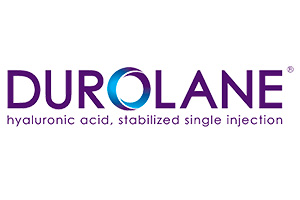Wrist pain and dysfunction are common issues that can significantly impact daily activities and overall quality of life. Wrist injections are a well-established therapeutic option for managing a variety of wrist conditions, offering relief from pain and inflammation and improving joint function. Among the various techniques used for wrist injections, the posterior approach stands out due to its specific advantages in certain clinical scenarios.
In this article I will give an explanation of the posterior approach for wrist injections, providing a detailed overview of the technique, its indications, and various medications. By the end of this article, you will have a thorough understanding of the posterior approach to wrist injections, including the steps involved, the types of medications used, and the potential risks and benefits associated with this procedure.
Indications for Wrist Injections
Wrists injections are a versatile and effective treatment option for a variety of conditions affecting the wrist. They are commonly used to alleviate pain, reduce inflammation, and improve joint function. The posterior approach, in particular, is often preferred in specific clinical situations. Below are the primary indications for wrist injections using this technique.
Common Conditions Treated with Wrist Injections
- Osteoarthritis
- Degenerative joint disease causing cartilage breakdown and joint pain.
- Wrist injections can help reduce inflammation and alleviate pain.
- Rheumatoid Arthritis
- An autoimmune disorder that leads to chronic inflammation of the wrist joints.
- Injections can control inflammation, relieve pain, and slow joint damage.
- Carpal Tunnel Syndrome
- Compression of the median nerve in the wrist leading to pain, numbness, and tingling.
- Injections can reduce inflammation and swelling around the nerve.
- Tendonitis
- Inflammation of the tendons in the wrist, often due to overuse or injury.
- Injections can help reduce pain and inflammation, promoting healing.
- Ganglion Cysts
- Noncancerous lumps filled with fluid that often appear along the tendons or joints of the wrist.
- Injections can reduce the size of the cyst and alleviate associated pain.
Symptoms that May Indicate the Need for a Wrist Injection
Patients experiencing the following symptoms may benefit from a wrist injection:
- Persistent wrist pain that does not respond to conservative treatments such as rest, ice, or over-the-counter pain medications.
- Swelling and inflammation in the wrist joint.
- Decreased range of motion or stiffness in the wrist.
- Numbness, tingling, or weakness in the hand or fingers, particularly in cases of carpal tunnel syndrome.
- Visible lumps or cysts on the wrist that cause discomfort or pain.
Patient Selection Criteria
Not every patient with wrist pain or related symptoms is an ideal candidate for wrist injections. Proper patient selection is crucial for achieving the best outcomes. Key criteria include:
- Diagnosis Confirmation: Accurate diagnosis of the underlying condition through clinical examination and imaging studies.
- Refractory Symptoms: Symptoms that have not improved with conservative treatments such as physical therapy, oral medications, or splinting.
- Absence of Contraindications: No contraindications such as active infection at the injection site, allergy to the injection medication, or severe coagulopathy.
- Patient Understanding and Consent: The patient should be informed about the procedure, including its benefits, risks, and potential outcomes, and should consent to the treatment.
By carefully considering these indications, healthcare providers can effectively utilize wrist injections via the posterior approach to manage a variety of wrist conditions, providing significant relief and improving patients’ quality of life.
The Posterior Approach Technique
Undergoing a wrist injection can be a straightforward process when performed correctly. Here’s a step-by-step explanation of what you can expect during a wrist injection using the posterior approach.
1. Patient Positioning
- Comfortable Seating: You’ll be seated comfortably with your arm resting on a flat surface, like an examination table.
- Support for Your Wrist: Your wrist will be positioned with your palm facing down and the back of your hand facing up. A small towel or cushion might be placed under your wrist for extra support.
2. Identifying Anatomical Landmarks
- Finding Key Points: The doctor will locate important landmarks on the back of your wrist. They’ll feel for a bony bump called Lister’s tubercle and the tendons that run along the back of your hand.
- Choosing the Injection Site: The ideal spot for the injection is usually just below Lister’s tubercle, between the tendons.
3. Preparing the Injection Site (Sterilization and Anesthesia)
- Cleaning the Area: The skin around the injection site will be cleaned thoroughly with an antiseptic solution to prevent infection.
- Numbing the Area: A small amount of local anesthetic, like lidocaine, may be injected to numb the area and make the procedure more comfortable for you.
4. Needle Insertion Technique
- Choosing the Right Needle: A thin needle, usually about 1 to 1.5 inches long, will be used for the injection.
- Inserting the Needle: The doctor will insert the needle at a shallow angle, aiming towards the joint space. The needle is carefully guided to avoid the tendons and reach the joint.
- Feeling a Slight Pressure: You might feel a bit of pressure as the needle enters the joint capsule, but it shouldn’t be painful.
5. Injection of Medication
- Preparing the Medication: The syringe will be filled with the prescribed medication, which could be a steroid, hyaluronic acid, or a mix of an anesthetic and anti-inflammatory drug.
- Ensuring Safety: Before injecting the medication, the doctor will gently pull back on the syringe to make sure the needle is not in a blood vessel.
- Injecting the Medication: Once everything is confirmed to be in place, the medication will be slowly injected into the joint space. You might feel a slight increase in pressure, but it should not be painful.
- Finishing Up: After the injection, the needle is smoothly withdrawn, and a small bandage is applied to the injection site.
Post-injection care for wrist injections involves several key steps to promote healing and minimize discomfort. After the procedure, it’s important to rest the injected wrist, avoiding strenuous activities, and applying ice packs periodically to reduce swelling. Pain management with over-the-counter medications may be recommended, and following any prescribed dosing instructions is essential.
Attend scheduled follow-up appointments with your healthcare provider to monitor progress and address any concerns promptly. Be vigilant for signs of complications such as increased pain, swelling, or drainage from the injection site, and seek immediate medical attention if any concerning symptoms arise. By adhering to these post-injection care guidelines, patients can support the effectiveness of the injection and facilitate a smooth recovery process.
Medications Used in Wrist Injections
Wrist injections can provide significant relief from pain and inflammation through the administration of specific medications directly into the joint. Here are the types of medications commonly used in these injections, their mechanisms of action, and the indications for their use.
- Corticosteroids
- Mechanism of Action: Cortisone is a powerful anti-inflammatory medication. A cortisone injection works by inhibiting the production of inflammatory substances in the body, thereby reducing swelling, redness, and pain in the affected area.
- Indications: Cortisone injections are commonly used for conditions involving significant inflammation, such as osteoarthritis, rheumatoid arthritis, and tendonitis. They are especially beneficial when oral anti-inflammatory medications are not effective or cause undesirable side effects.
- Hyaluronic Acid
- Mechanism of Action: Hyaluronic acid is a naturally occurring substance found in joint fluid that acts as a lubricant and shock absorber. When injected into the joint, it helps restore the natural cushioning and lubrication, reducing pain and improving joint function.
Usually, a small amount of HA is required according to the joint size. For example, here is Durolane SJ and Sinovial HL 32, trusted lubricant medications for small joints. - Indications: Hyaluronic acid injections are primarily used for osteoarthritis. They are particularly helpful for patients who have not responded well to other treatments, such as oral medications or physical therapy. This treatment is often referred to as viscosupplementation.
- Mechanism of Action: Hyaluronic acid is a naturally occurring substance found in joint fluid that acts as a lubricant and shock absorber. When injected into the joint, it helps restore the natural cushioning and lubrication, reducing pain and improving joint function.
- Anesthetics
- Mechanism of Action: Local anesthetics, such as lidocaine or bupivacaine, temporarily block nerve signals in the area where they are injected, providing immediate pain relief. They do not address inflammation but can provide short-term relief and diagnostic information.
- Indications: Anesthetics are used for quick pain relief and to confirm that the injected area is the source of the pain. They are often combined with corticosteroids to provide both immediate and long-lasting relief. Additionally, they are used to numb the area during the injection process to make it more comfortable for the patient.
Indications for Using Specific Medications
- Corticosteroids: Ideal for treating inflammatory conditions such as rheumatoid arthritis, severe osteoarthritis, and tendonitis. They are particularly useful when there is significant swelling and pain that interfere with daily activities.
- Hyaluronic Acid: Best suited for patients with osteoarthritis who need improved joint lubrication and cushioning. It is often chosen for patients seeking a longer-term solution to joint pain and stiffness, especially when other treatments have failed.
- Anesthetics: Used for immediate pain relief and to aid in diagnosing the source of pain. They are commonly used in combination with other medications during the injection procedure to ensure patient comfort.
By understanding the types of medications used in wrist injections and their specific purposes, patients can better appreciate the benefits of these treatments and how they help in managing wrist pain and improving joint function.
Risks and Complications
While wrist injections can be highly effective in managing pain and inflammation, like any medical procedure, they carry certain risks and potential complications. It’s essential to be aware of these risks and understand how healthcare providers work to minimize them.
Potential Risks and Complications Associated with Wrist Injections
- Infection: There is a risk of introducing bacteria into the joint space during the injection, leading to an infection. Symptoms of infection include increased pain, swelling, warmth, redness, and fever.
- Bleeding: Some patients may experience bleeding at the injection site, particularly if they have underlying bleeding disorders or are taking blood-thinning medications.
- Nerve Damage: In rare cases, the needle used for the injection can inadvertently damage nearby nerves, leading to temporary or permanent numbness, tingling, weakness, or other neurological symptoms.
- Allergic Reactions: Patients may have allergic reactions to the medications used in the injection, such as corticosteroids or local anesthetics. Symptoms can range from mild skin irritation to severe anaphylaxis, a life-threatening allergic reaction.
However, those difficulties are usually prevented by skilled medical specialists, their strict aseptic technique, patient screening and education.
Conclusion
In conclusion, wrist injections using the posterior approach are valuable therapeutic options for managing a variety of wrist conditions, providing relief from pain and inflammation while improving joint function. Through this comprehensive guide, we’ve explored the anatomy of the wrist, indications for wrist injections, the posterior approach technique, medications used, risks and complications, and post-injection care.
By understanding the intricacies of wrist injections, patients and healthcare providers alike can make informed decisions regarding treatment options and expectations. While injections can offer significant benefits, it’s essential to recognize and address potential risks and complications to ensure patient safety and optimize outcomes.
Whether you’re seeking relief from pain or learning about treatment options as a healthcare professional, this guide serves as a valuable resource. By working collaboratively with healthcare providers, patients can navigate injections with confidence, ultimately leading to improved quality of life and enhanced wrist function. Remember to consult with your healthcare provider for personalized advice and treatment tailored to your individual needs.


